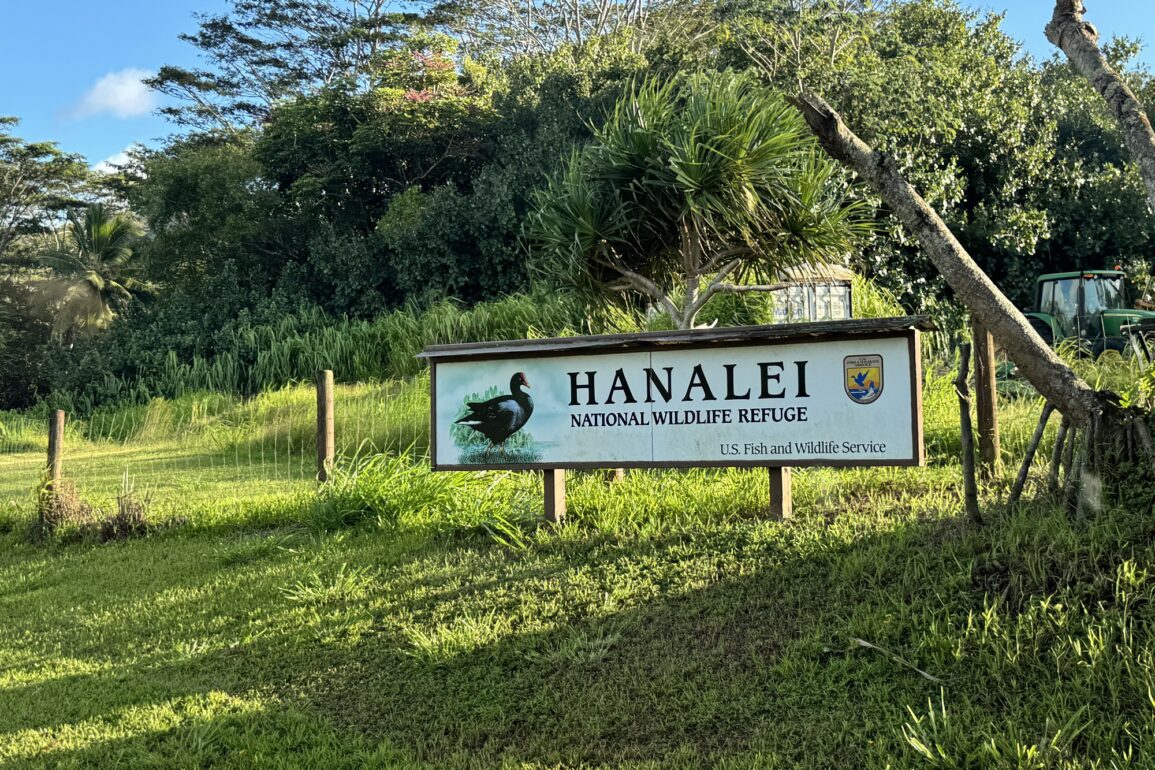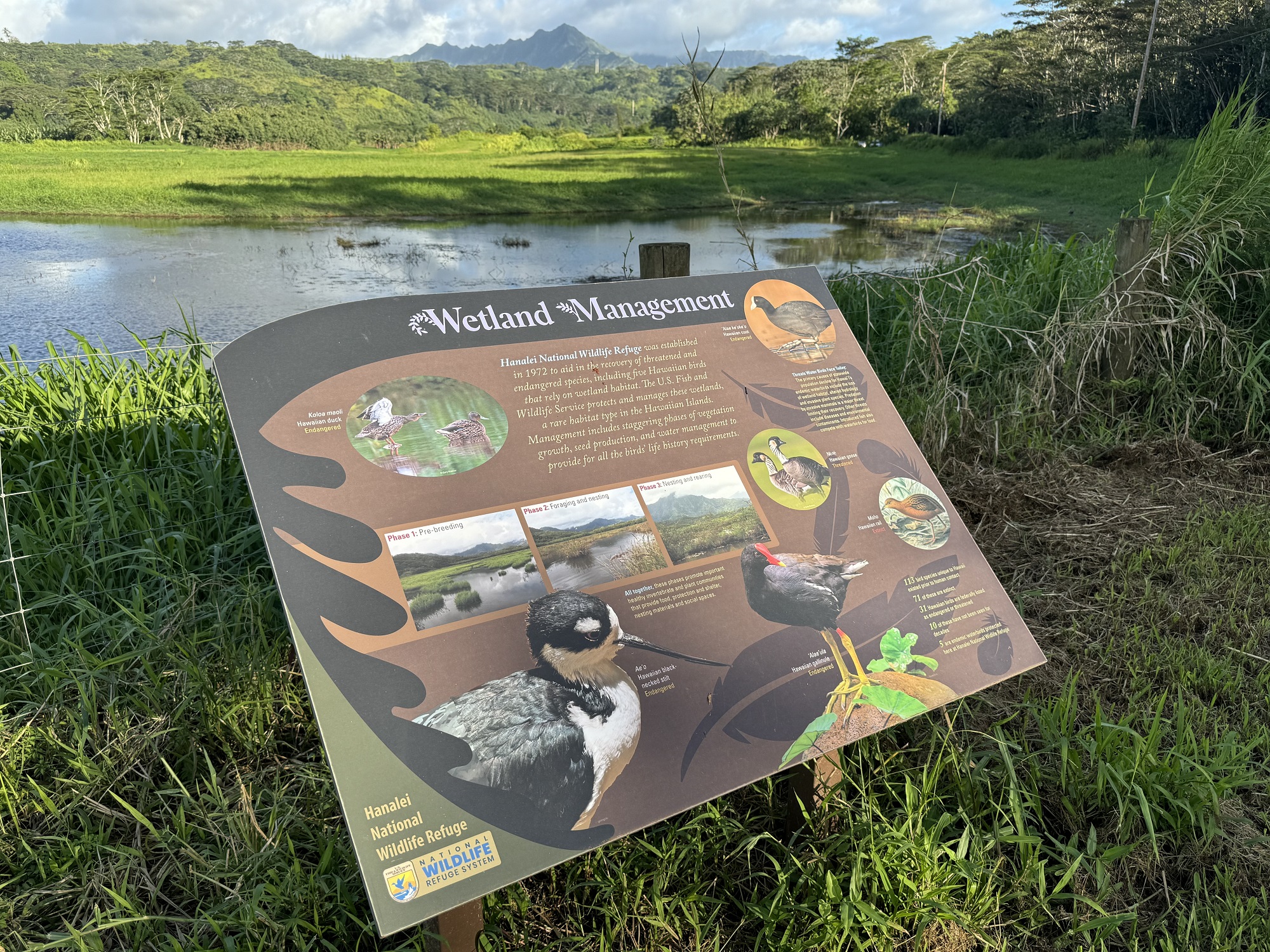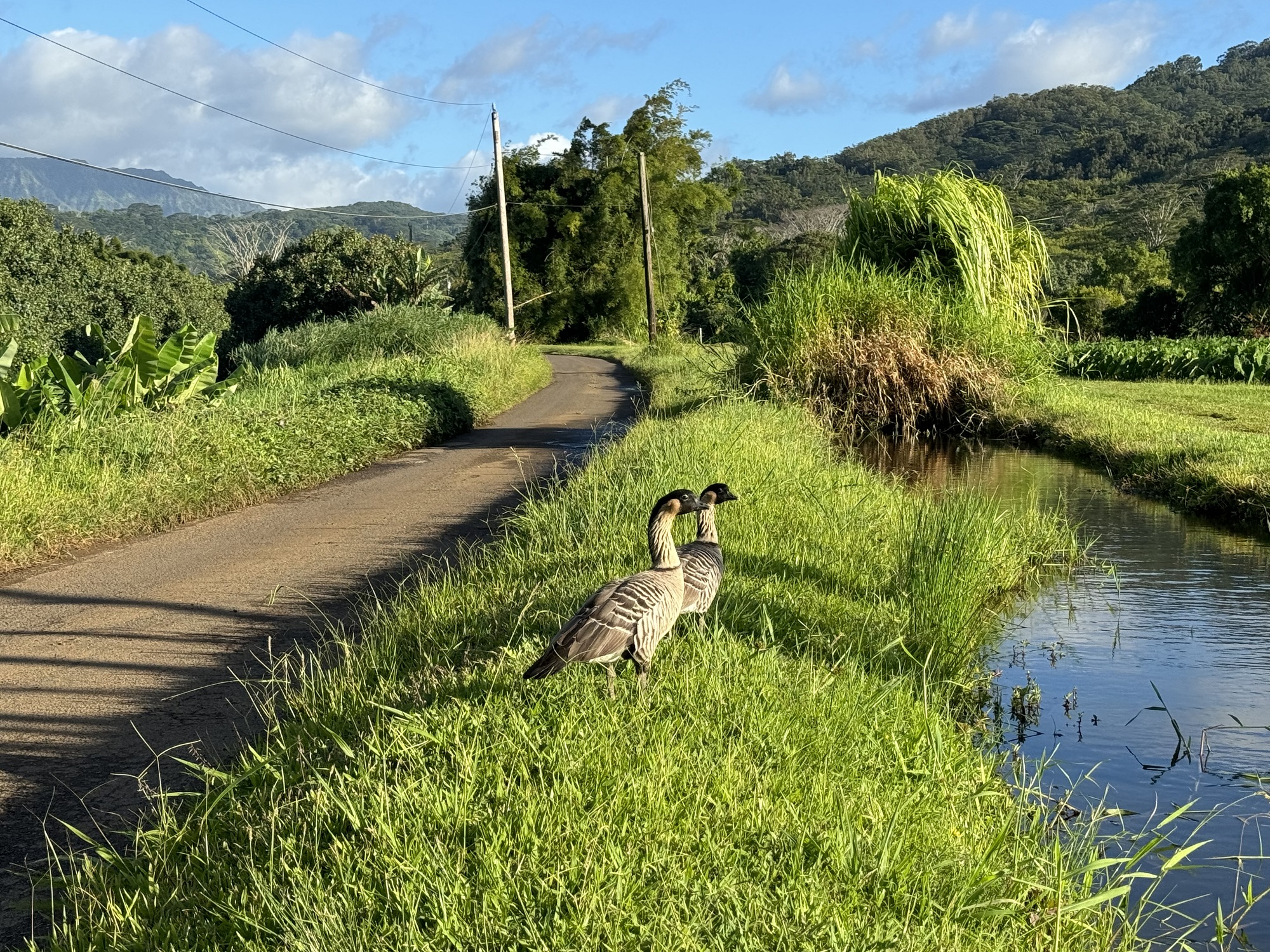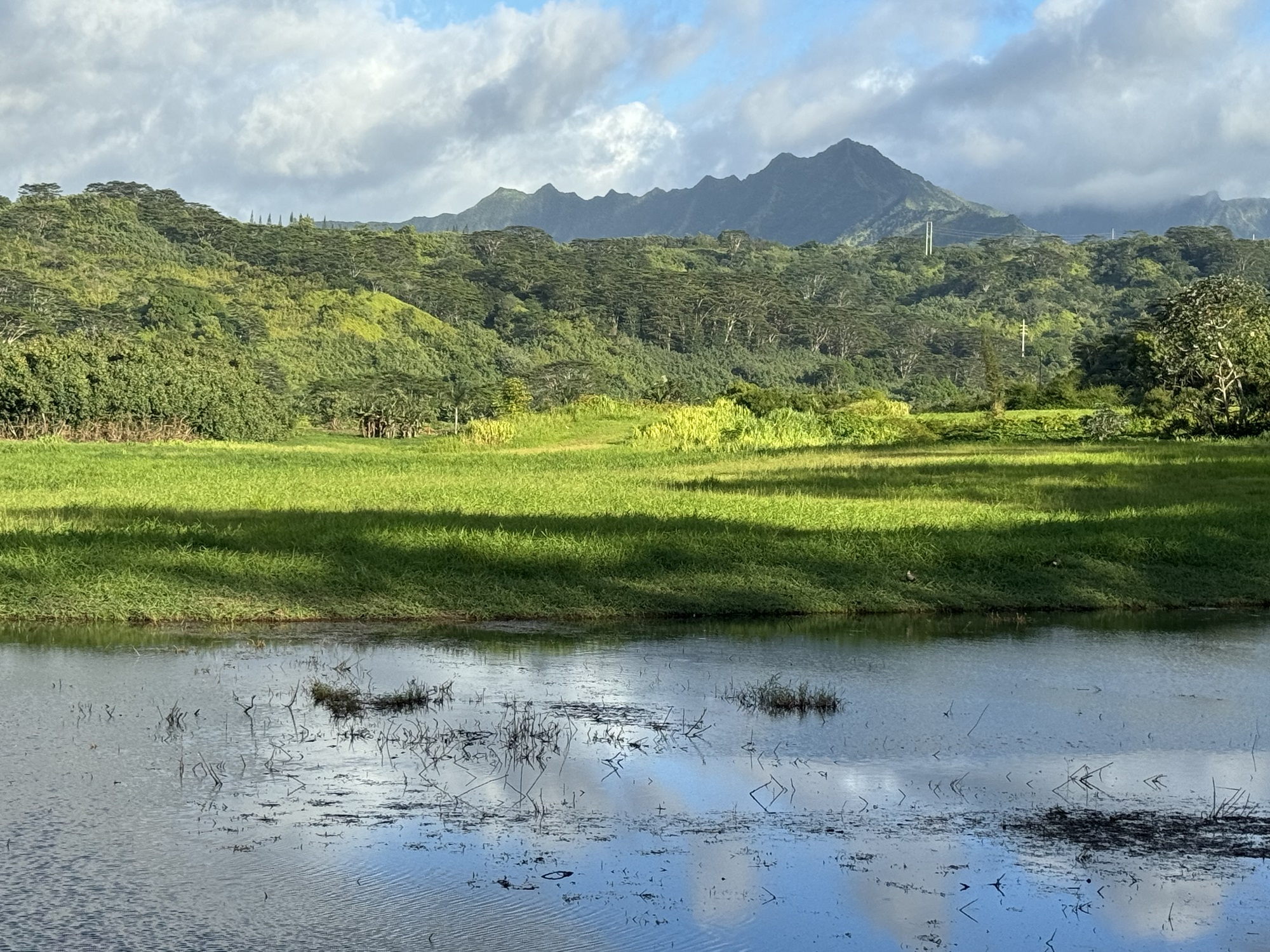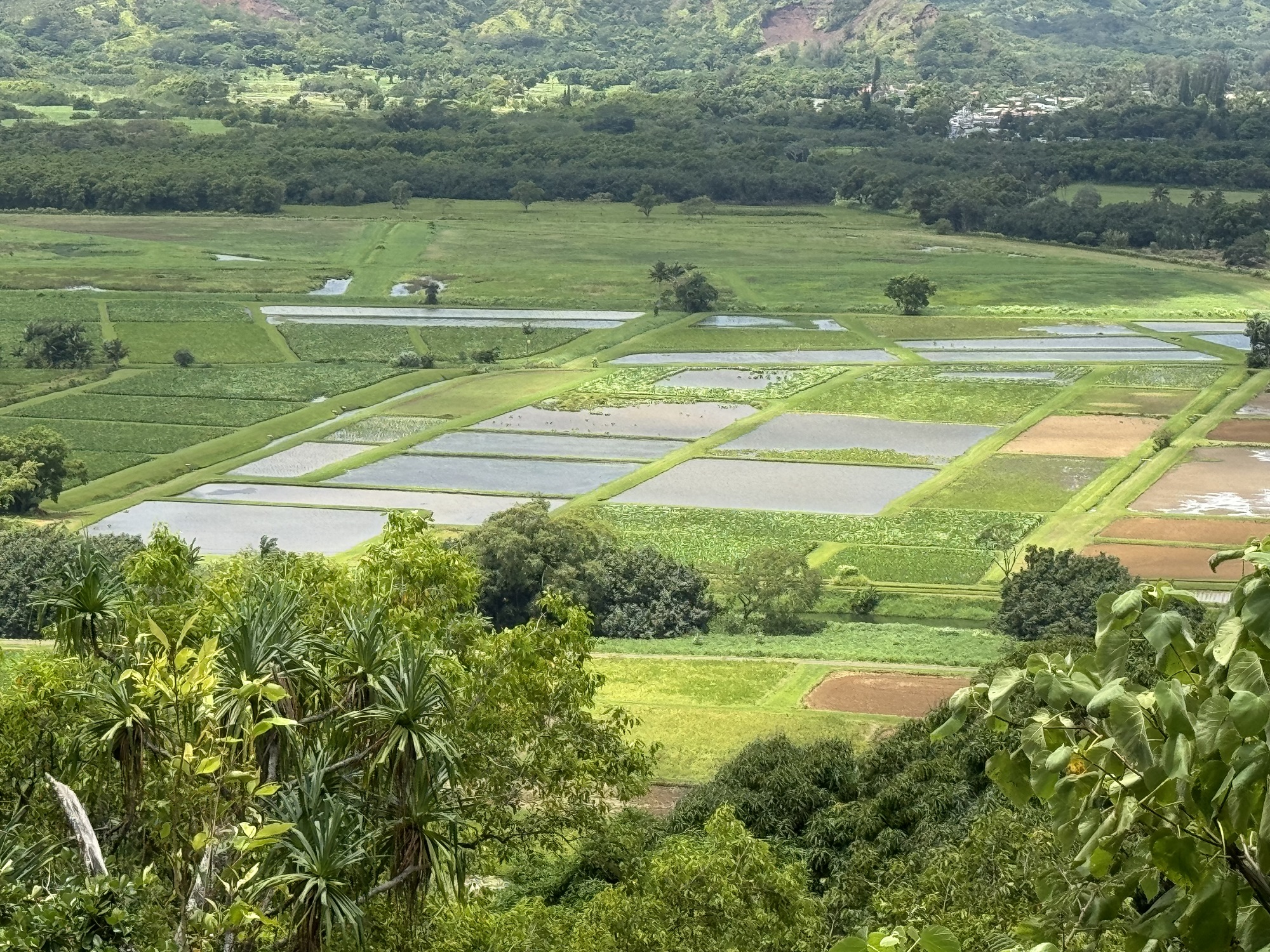In the heart of Hanalei Valley, the Hanalei National Wildlife Refuge protects a diverse ecosystem where endangered waterbirds thrive amidst stunning scenery.
- Protected wetland habitat for endangered Hawaiian waterbirds.
- Limited access on Ohiki Road just past the Hanalei Bridge.
- Drive slow due to abundance of nene and other birds.
- The taro fields are on private property and the wetlands are off limits. No trespassing on either.
- No drones, pets or camping.
- No facilities or restrooms.
- Map: Google Maps
Located on the lush, rain-soaked north shore of Kauai in the breathtaking Hanalei River Valley, the Hanalei National Wildlife Refuge is a haven for wildlife and nature enthusiasts alike. Established in 1972 under the Endangered Species Conservation Act, the approximately 917-acre refuge is home to over 40 species of birds, including five threatened Hawaiian waterbirds. The refuge is part of the larger Kauai National Wildlife Refuge Complex, which includes nearby Kilauea Point.
Among the notable residents are five Hawaiian birds that rely on wetland habitat, including Ae’o (Hawaiian black-necked stilt), ‘Alae’ula (Hawaiian gallinule), Moho (Hawaiian rail), Nene (Hawaiian goose) and Koloa maoli (Hawaiian duck). These species depend on the wetland and taro field ecosystems that thrive within the refuge, making it one of the most important protected areas for waterbird recovery in the state.
Though the wetlands and taro fields are closed to the public, limited access is allowed along Ohiki Road, the road just past the Hanalei Bridge that runs alongside the Hanalei taro fields. There are several pullouts along this narrow road that offer opportunities for visitors to appreciate the stunning scenery. Visitors are reminded to tread lightly in this area and to stay off the wetlands and taro fields. Drones are not allowed in the refuge.
A new viewpoint has been added above the refuge, where visitors and can enjoy panoramic views of the refuge, valley and carefully maintained taro patches. This official viewpoint is very near the main entrance to Princeville, while a smaller, unofficial viewpoint, can be found in a pullout just past the Princeville Center.
Birdwatching is one of the main activities for visitors to the Hanalei National Wildlife Refuge. While the refuge itself is restricted, the taro fields and wetlands can be observed from a distance, where keen-eyed birdwatchers may spot the refuge’s resident endangered waterbirds. The Hawaiian goose, or nene (Hawaii’s state bird), is a primary resident of the area, adding to the birdwatching appeal. Drive slow on Ohiki Road and watch out for nene and other birds if you visit the area.
The Hanalei Valley is a mosaic of greens, with the winding Hanalei River cutting through the valley floor and majestic mountains rising in the background, often adorned with waterfalls after a rainfall. This iconic landscape is not only visually stunning but also holds immense cultural significance. The valley has been cultivated for over a thousand years, primarily for taro farming, which continues to this day. Taro, or kalo, a staple crop with deep cultural significance to Native Hawaiians, is grown extensively in Hanalei Valley. The fields not only support local agriculture but also create ideal wetland habitats for the endangered birds. The synergy between conservation and agriculture has been a key factor in preserving the area’s unique ecosystem.
While the refuge has limited access, there are plenty of nearby attractions that offer a more immersive experience with Kauai’s natural beauty. Nearby attractions include Hanalei Bay, Limahuli Garden, Ke’e Beach, and the affiliated Kilauea Lighthouse and National Wildlife Refuge.
Managed by the U.S. Fish and Wildlife Service, the refuge is a rare habitat in the Hawaiian Islands. Management includes staggering phases of vegetation growth, seed production, and water management to provide for all the bird’s living requirements. The wildlife refuge seeks to mitigate several threats to water birds in Hawaii. Primary threats include the loss of wetland habitat, altered hydrology and invasive plant species. Other threats include predation by invasive mammals, diseases and contaminates.
The Hanalei National Wildlife Refuge serves as a reminder of the delicate balance between human activity and nature. By preserving critical wetland habitats and supporting endangered species, the refuge underscores the importance of conservation efforts on Kauai. Its breathtaking scenery, cultural significance, and role in wildlife protection make it a key destination for anyone interested in Hawaii’s rich biodiversity, cultural heritage and natural beauty.

